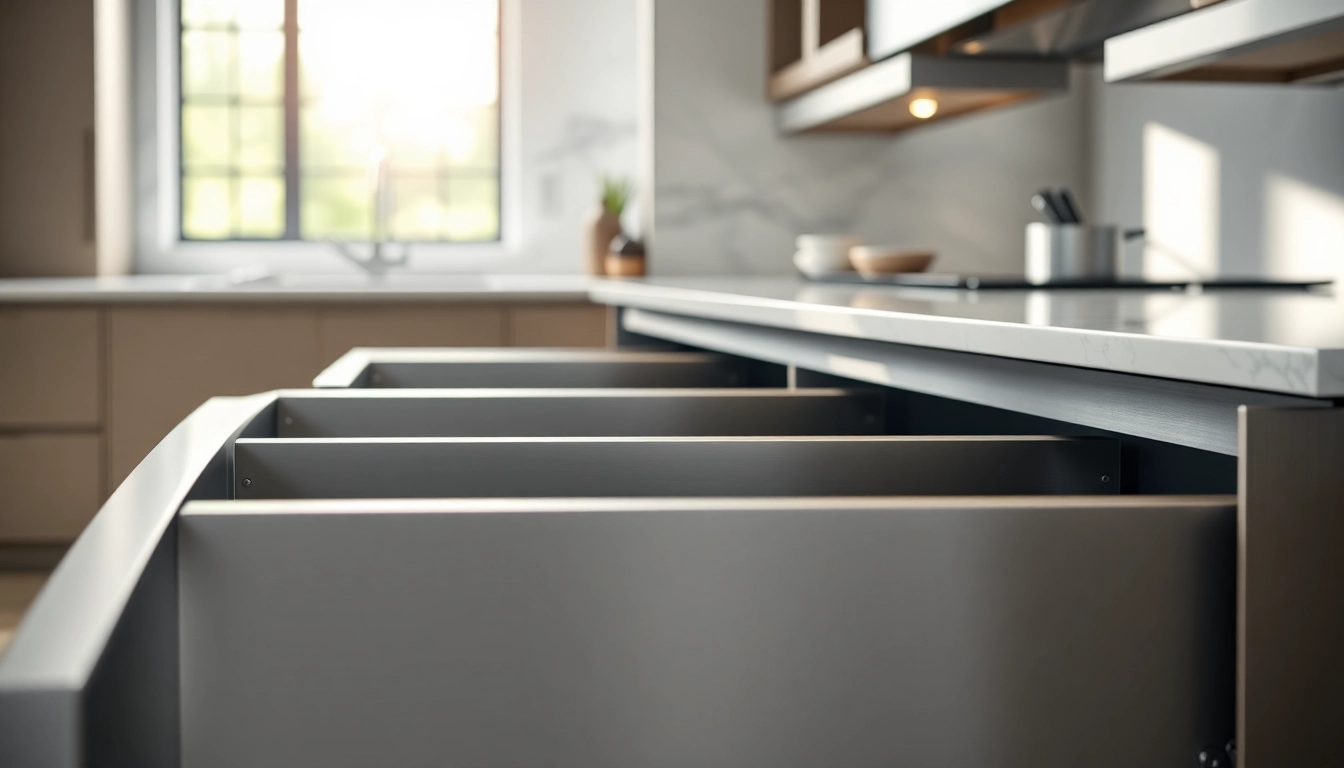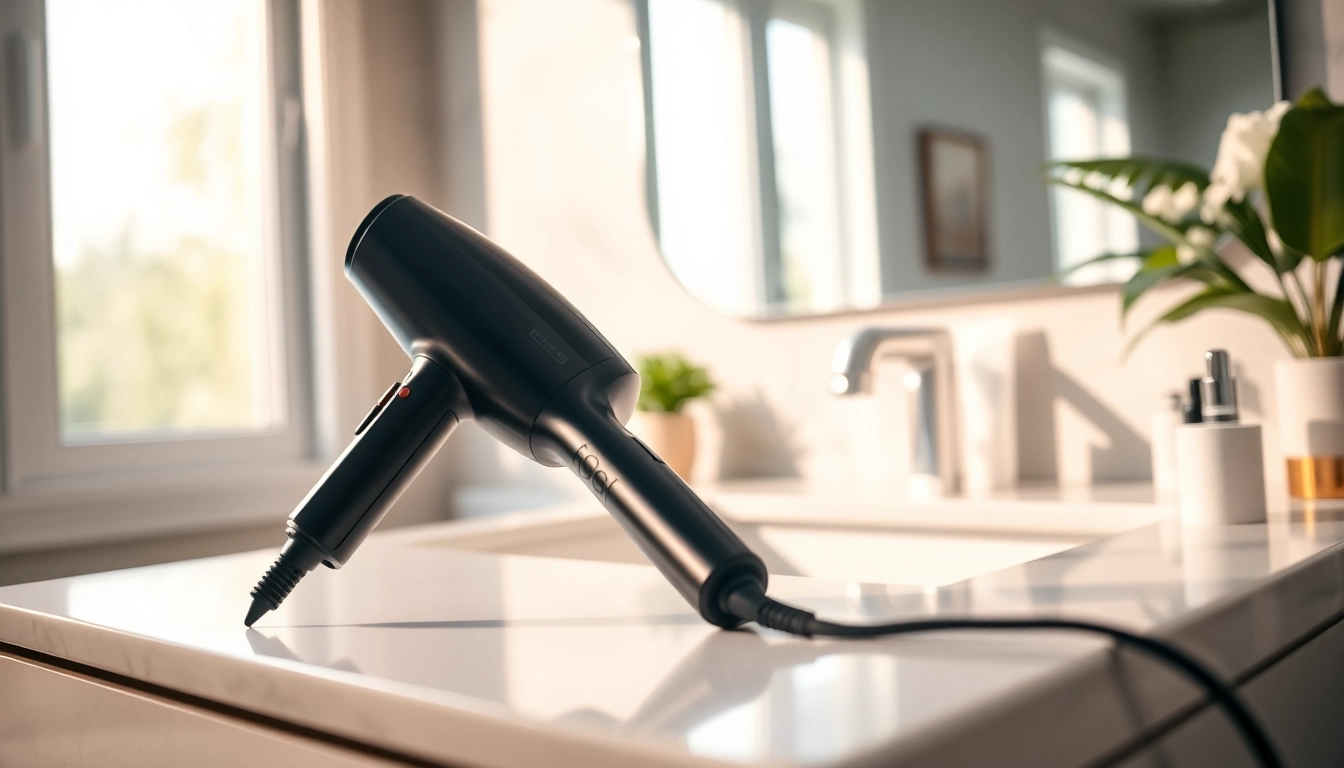Understanding Metal Drawer Systems
What is a Metal Drawer System?
A metal drawer system is an engineered solution that provides durable, reliable, and functional drawers within various furniture configurations, ranging from kitchen cabinets to office setups. Unlike traditional wooden drawers, metal drawer systems are built from robust materials, such as steel and aluminum, which promote increased longevity and strength. These systems often incorporate various sliding mechanisms like ball-bearing slides or undermount slides to enhance functionality and user experience.
The inception of metal drawer systems can be traced back to the need for more practical, durable solutions for storage in both residential and commercial settings. As space optimization becomes a priority in modern design, these systems offer unique advantages by maximizing space while ensuring aesthetic appeal. To explore a variety of options in this category, check out the Metal Drawer System available at Tallsen.
Benefits of Metal Drawer Systems
There are numerous advantages to integrating metal drawer systems into your furniture design:
- Durability: Metal drawer systems are designed to withstand heavy use and resist wear and tear over time.
- Design Flexibility: Available in various styles and finishes, these systems can complement different aesthetics and existing furniture.
- Efficient Space Use: With options for undersized settings or full-extension capabilities, metal drawers can optimize storage in even the tightest spaces.
- Enhanced Functionality: Many metal drawer systems offer features like soft-close mechanisms and easy installation, improving overall user experience.
- Low Maintenance: Metal systems do not require the same upkeep as wooden alternatives, making them easier to care for over the long term.
Common Features and Designs
When considering metal drawer systems, various features and designs come into play:
- Ball Bearing Slides: These slides provide a smooth operation, allowing drawers to glide effortlessly in and out. Typically able to support heavier weights, they are ideal for kitchens and tool storage.
- Undermount Slides: Hidden from view, undermount slides allow for a cleaner look and easier access to the full extent of the drawer’s capacity. The absence of side rails gives deeper and wider storage options.
- Custom Finishes: Many manufacturers offer a range of finishes, including powder-coated colors and brushed metals, aligning with personal or design specifications.
- Adjustable Widths: Metal drawer systems are often customizable in width and depth, facilitating compatibility with various cabinet sizes.
Types of Metal Drawer Systems Available
Ball Bearing vs. Undermount Slides
The choice between ball bearing and undermount slides can significantly affect how metal drawer systems perform:
Ball Bearing Slides: These slides are characterized by their durability and the ability to handle significant loads. They come with a straightforward installation process, making them a popular choice for DIY enthusiasts. Due to their robustness, they are particularly useful in heavy-duty applications, such as kitchen drawers that hold pots and pans or industrial storage units.
Undermount Slides: Typically installed below the drawer, these slides provide a discreet appearance while maximizing the use of drawer space. They are ideal for modern setups that focus on aesthetics, as they eliminate side rails and offer a seamless look. Their full-extension nature allows for better accessibility, making them favorable for use in cabinetry designed for organization.
Heavy-Duty Metal Drawer Systems
Heavy-duty metal drawer systems cater to applications that require greater strength and load-bearing capacity. These systems are designed for environments where storing bulky or heavy items is necessary. Examples include:
- Tool Storage: Ideal for garages or workshops, heavy-duty systems can hold large tools, equipment, and machinery.
- Commercial Use: Retail or warehouse environments benefit from these sturdily designed drawers, which can manage inventory efficiently.
- Industrial Applications: Metal drawers designed for factories and manufacturing settings need to hold heavy materials while remaining accessible.
Choosing the Right Finish for Your Needs
The finish of your metal drawer system plays a crucial role in its overall appearance and performance. When selecting a finish, consider:
- Corrosion Resistance: Coatings like powder coating help protect against rust, particularly in humid environments.
- Aesthetics: Choose a finish that complements your existing furniture or design theme. Metallic finishes, for instance, provide a sleek look, while powder-coated options offer versatility in color.
- Maintenance: Smooth finishes are easier to clean and less likely to show scratches over time, maintaining a polished look.
Installation Guide for Metal Drawer Systems
Tools and Materials Required
Before diving into the installation of metal drawer systems, gather the necessary tools and materials:
- Measuring tape
- Drill with appropriate drill bits
- Screws compatible with your drawer system
- Level
- Wooden or metal spacer blocks (to help align slides)
- Safety goggles and gloves
- Instructions/manual for your specific drawer system
Step-by-Step Installation Process
- Measure the Cabinet Space: Start by measuring the height, width, and depth of the cabinet space where the drawer will be installed.
- Prepare the Drawer Frame: Assemble the drawer frame according to the manufacturer’s instructions, ensuring all screws are tight and secure.
- Attach Drawer Slides to the Cabinet: Use your level to mark where the slides will go inside the cabinet. Attach the slides with screws, ensuring they are level and secure.
- Install the Slides to the Drawer Box: Following the provided guide, attach the corresponding slides to the side of the drawer box.
- Insert the Drawer into the Cabinet: Carefully slide the drawer into place, ensuring that the slides engage correctly and allow smooth movement.
- Test the Drawer: Open and close the drawer multiple times to ensure that it operates smoothly and aligns properly.
Common Mistakes to Avoid
While installing metal drawer systems, homeowners and professionals alike often encounter setbacks. Here’s how to avoid common pitfalls:
- Forgetting to Measure: Always double-check your measurements before beginning. This ensures your drawers will fit perfectly within the designated cabinet space.
- Not Leveling the Slides: If the slides are not perfectly level, it can lead to uneven drawer operation and potential damage. Use a level as you attach them.
- Ignoring Weight Limits: Pay attention to the manufacturer’s specifications regarding weight limits for both the drawers and the slides to avoid early wear or breakage.
Maintenance and Care for Metal Drawers
Cleaning and Upkeep Tips
To prolong the life of your metal drawer systems, regular maintenance is key. Here are some cleaning and upkeep tips:
- Regular Dusting: Dust the drawers regularly to prevent buildup, especially around the slides, ensuring smooth operation.
- Use Mild Cleansers: For more thorough cleaning, use a mild detergent mixed with water. Avoid abrasive cleaners that can scratch the surface.
- Lubricate the Slides: Occasionally apply a lubricant specifically designed for drawer slides to keep them functioning smoothly.
Identifying Wear and Tear
It’s important to regularly inspect your metal drawer systems to catch any signs of wear or damage early:
- Check for Rust: If you notice any rust forming, it’s essential to address it quickly to prevent it from spreading.
- Listen for Noises: Unusual noises when operating the drawer may suggest a problem with the slides or the structure of the drawer itself.
- Look for Misalignments: Over time, drawers may become misaligned. Adjust the slides if necessary to restore proper operation.
When to Replace Your Metal Drawer System
Even the best metal drawer systems will eventually require replacement. Here are some signs that it might be time for an upgrade:
- Severe Damage: If the frame or slides are severely damaged, replacement is often more cost-effective than repairs.
- Inconsistent Operation: Drawers that stick or do not open smoothly may indicate that they’ve worn out, requiring replacement.
- Outdated Design: If your drawer systems clash with your current decor or do not meet your needs, it might be time for an upgrade.
Maximizing Space with Metal Drawer Systems
Design Tips for Efficient Storage
To fully leverage your metal drawer systems for efficient storage, consider these design tips:
- Use Dividers: Incorporating dividers within drawers can help keep items organized and easily accessible.
- Group Similar Items: Store like items together to streamline the process of finding and retrieving items in your drawers.
- Vertical Storage: Utilize vertical space within drawers to store items, maximizing the available storage area.
Using Inserts and Organizers
To enhance organization within metal drawers, consider using inserts and organizers:
- Cutlery Trays: Perfect for kitchens, these trays keep utensils neatly organized, increasing functionality.
- Drawer Organizers: Available for office supplies or tools, these inserts help segment the contents for better organization.
- Custom Options: Many manufacturers offer custom organizational solutions tailored to fit specific drawer dimensions.
Customizable Options for Every Kitchen
Customizable metal drawer systems present a unique opportunity for homeowners to tailor their kitchen storage solutions:
- Modular Systems: These systems can be adjusted to fit various cabinet sizes and configurations, offering maximum flexibility.
- Personalized Finishes: Opt for custom finishes to achieve a cohesive design theme throughout your kitchen.
- Multi-Functionality: Custom drawers can serve multiple purposes, such as including pull-out cutting boards or integrated spice racks.



